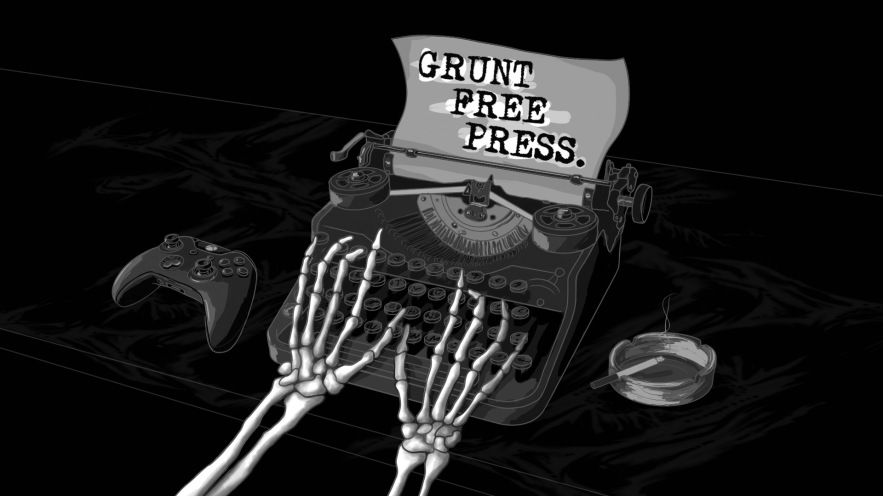Tom Clancy's The Division Review (PC)
Tom Clancy's The Division is a massive game that combines RPG conventions with the brand's signature tactical shootouts. Set in a post pandemic New York City, the sea of humanity that is usually on display is replaced by roving bands of looters, rioters, PMCs turned fascist, and pockets of survivors just looking to make it through the day. You play as a member of The Division, a top secret military organization of sleeper agents that live normal everyday lives, but are activated when acts of domestic terrorism and unrest leave more direct, traditional armed forces actions ineffective. The first wave of Division agents has failed, gone missing, or are dead, so in addition to breaking the grip of control the gangs and private armies have over the city, you're also tasked with uncovering the fate of the first responders. In gameplay terms, this means shooting a bunch of dudes and collecting icons on a gigantic map.
There are a few ways to approach The Division: it's a full fledged, open world campaign you can enjoy solo for twenty to forty hours depending on how thorough you want to be. You can roam the world with up to three other co-op partners and tackle missions that way. There's a Diablo/Borderlands/Destiny-style loot grind if you're interested in replaying missions on harder difficulties and farming to stay on the bleeding edge. Then there's an open world PvP area where it's basically the Wild West; super high level enemies, better gear, and the constant threat of griefing by other players who want to steal what you have. I focused more on the solo aspect of the game because I really don't enjoy grinding in any form, and despite the wide net the game has cast it's a very enjoyable, meaty, polished single player experience.
The first thing I noticed when booting up The Division was just how beautiful the world looks. Even with my fairly modest PC the fog effects, lighting, and scale are incredibly effective. Set shortly after a rapidly spreading viral outbreak on Black Friday, New York City is decorated to the hilt with Christmas lights and holiday decorations, and the convincing snow effects and abandoned traffic jams absolutely sell the setting. There are little details everywhere: piles of trash left from the crumbling infrastructure, graffiti on the walls, broken windows and looted storefronts, piles of bodybags or burning, infected corpses, contaminated or contained areas lit by blacklights... This is a standard setter; impressive from a technical standpoint and still managing to do environmental storytelling with the best of them. The amount of interactivity with the environments is equally jaw-dropping: tires deflate, bullets chip away at walls, glass shatters... it's tech demo level stuff, and the game itself doesn't suffer from the bells and whistles included. The only thing that pulled me out was some noticeable texture pop-ins that took me back to early Unreal Engine problems, but that was mostly apparent on signs and other background details and probably could have been corrected with higher settings on a beefier PC. But, again, even with the game auto-optimized for my rig, it ran completely rock solid, never dropping a single frame that I noticed. It's the definition of a polished game.
When the bullets and grenades start flying and you're scrambling for cover, the combat system is an intuitive marvel. All actions feel smooth and fluid. Whether you're rolling out of the way of an area of effect attack, moving cover to cover or changing corners, or deploying your own turrets and abilities you always feel in control. Small skirmishes can devolve into simple stop-and-pop firefights, but as enemy difficulty, variety, and armor increase you're forced to change tactics and move around to avoid getting surrounded and pumped full of lead. This isn't the smartest AI around and it's often easy to break, but a harried shootout gets the blood pumping as well as just about any other action game. Since this is an RPG at it's core, levels and gear do become a factor. You can run up to shit enemies and just mow them down point blank, but bosses armed with LMGs and sniper rifles in areas you shouldn't be in will make quick, demoralizing work of you. Just staying within the recommended level range for missions feels right; it's a good challenge, you'll die every now and then, but it's not mindlessly easy or frustrating.
Scattered throughout New York are hundreds of collectibles that flesh out the story of The Division, tell small, personal tales of inhabitants of the city, or clue you into what happened to the first wave of your compatriots. These award you XP, and are gained by solving small environmental/navigation puzzles. Just like the combat, traversing the playspace to track these down showcase the spot on controls. Mantling and using fast ropes are like second nature as you spot a pickup, plot a course, and deftly, intuitively navigate to where you want to go. There are cues to pick up on, like blue tarps signaling a climbable surface or highlighted doors and containers being manipulable, but for the most part everything feels so smooth and natural. You can find cell phones with recorded conversations, documents about the outbreak, shoot down tangled drones for their blackboxes, or find “echoes”; holographic representations of the past pieced together through security cameras and other technology. These echoes are a very interesting evolution for environmental storytelling, as you're able to walk around (and through) a scene, interacting with specific highlights and gleaning information both aurally and visually. It's worth noting that while The Division is certainly a “hoorah!”, pro-military Tom Clancy game with the usual military jargon, there's a surprising amount of personality included and small stories to be told, which is unusual but certainly welcome.
So The Division has a really good single player RPG/shooter campaign. What's there to do after that? You can run any previously completed missions on harder difficulties for better gear, either for the hell of it or to complete daily challenges that award Phoenix Credits (a currency to buy even better gear). Or you can try out the Dark Zone, the game's open world PvP/high-end PvE area. While in the Dark Zone any other human players can kill you at any time and take your area-specific loot and cash. Any loot gained here is contaminated and must be extracted by helicopter at designated points, where a player sends up a flare which notifies others that the chopper is incoming, theoretically creating backstabbing opportunities and tension. I only spent limited time in this area, as the unstructured nature and loot grind just doesn't really appeal to me. My experience there was actually fairly uneventful, as most players kind of just did their own thing and were quite cooperative. I had one player-centric conflict while extracting... and I was able to just eat his damage and extract my loot anyway so he wasn't very good at griefing. This is my main complaint with The Division: I would have loved some matchmade, traditional adversarial modes where the incredible level design, combat system and cover mechanics could have shined, but there are none available. Yeah, it's kind of greedy and selfish I guess to ask for more in a game filled to the brim with content, but I really don't think I'll be coming back to the Dark Zone anytime soon, so my time with the game is pretty much over.
Tom Clancy's The Division gets tactical shooter RPGs right. That's not a particularly oversaturated market, but it's a great one when done as well as The Division. It's enormous, polished, and plays like a dream. It's the new benchmark for “current gen”, AAA games, delivering one of the best open worlds out there as well as top notch third person, cover-based shooting mechanics. Get activated. But don't get active. Sit on your ass and play The Division for forty hours.


